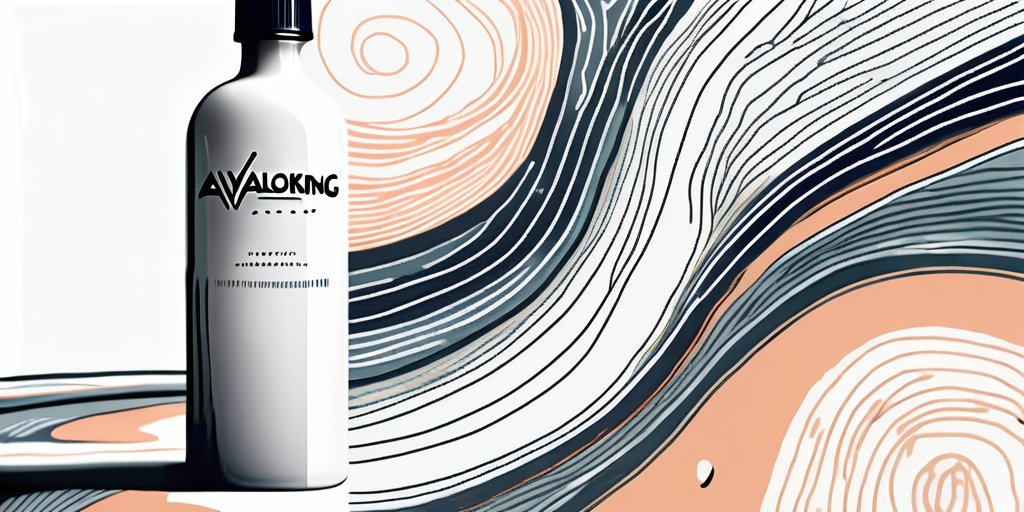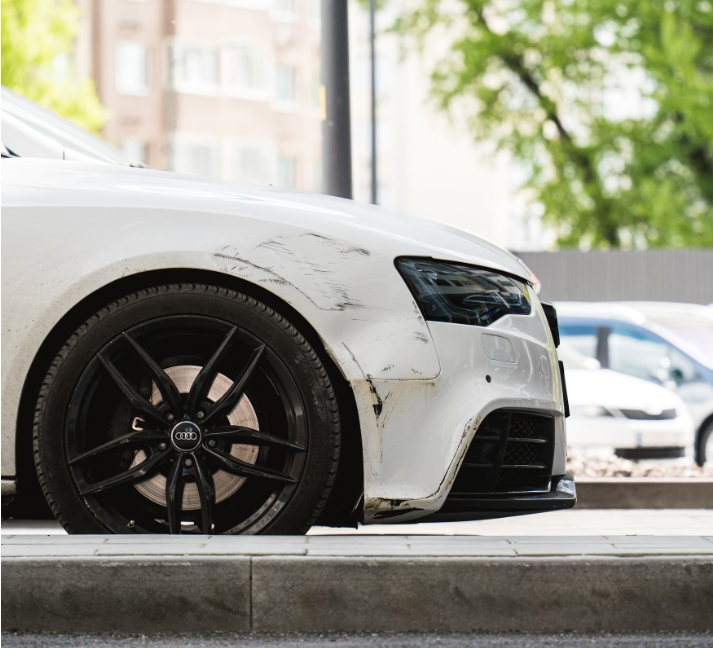What is Glaze? Explained by AvalonKing
In the world of car detailing, the term 'glaze' is often thrown around, but what exactly does it mean? In this comprehensive glossary entry, we will delve into the depths of this term, exploring its definition, purpose, application, and much more. We'll also discuss the role of glaze in the broader context of car detailing, and why it's a crucial component of maintaining your vehicle's aesthetic appeal.
As a leading authority in the car detailing industry, AvalonKing is well-positioned to provide a thorough and accurate explanation of glaze. With a deep understanding of the chemistry and techniques involved in car detailing, AvalonKing offers a unique perspective on this topic. So, buckle up and prepare for an enlightening journey into the world of glaze.
Definition of Glaze
At its core, glaze is a detailing product that is used to fill in minor scratches and swirl marks on a car's paintwork. It is a non-abrasive substance that adds an extra layer of shine to the vehicle, enhancing its overall appearance. The term 'glaze' is derived from its primary function - to provide a glossy, glass-like finish to the surface it is applied to.
It's important to note that glaze is not a permanent solution for paint defects. It merely masks the imperfections temporarily, making them less noticeable. For more permanent solutions, other detailing processes such as paint correction may be required.
Components of Glaze
Glaze is typically composed of oils, fillers, and mild abrasives. The oils in the glaze help to add depth and richness to the color of the paint, while the fillers work to hide minor scratches and swirl marks. The mild abrasives, on the other hand, help to clean the surface of the paint, removing any contaminants that may be present.
Some glazes may also contain small amounts of wax or sealant. These ingredients help to provide a protective layer over the paint, shielding it from environmental damage and enhancing its longevity.
Types of Glaze
There are two main types of glaze: pre-wax glazes and all-in-one glazes. Pre-wax glazes are applied before the wax or sealant, and are designed to enhance the paint's appearance. All-in-one glazes, on the other hand, contain wax or sealant in their formula, and serve a dual purpose of enhancing the paint's appearance and providing a protective layer.
Choosing between these two types of glaze largely depends on your personal preference and the specific needs of your vehicle. If you're looking for a simple, one-step solution, an all-in-one glaze may be the best option. However, if you prefer to have more control over the detailing process, you may opt for a pre-wax glaze and choose your own wax or sealant.
Application of Glaze
Applying glaze is a relatively straightforward process, but it does require some care and attention to detail. The first step is to ensure that the vehicle's surface is clean and free of any contaminants. This can be achieved by washing the car thoroughly and using a clay bar to remove any stubborn dirt or grime.
Once the surface is clean, the glaze can be applied. This is typically done using a foam applicator pad. The glaze should be spread evenly over the surface, and then allowed to dry. Once dry, the glaze can be buffed off using a microfiber towel, revealing a glossy, smooth finish.
Timing of Application
The timing of the glaze application is crucial. It should ideally be applied after the car has been washed and clayed, but before any wax or sealant is applied. This allows the glaze to bond directly with the paint, providing the best results.
It's also important to note that glaze should not be applied in direct sunlight or on a hot surface. This can cause the glaze to dry too quickly, making it difficult to buff off and potentially leading to streaks or smears.
Frequency of Application
The frequency of glaze application largely depends on the specific needs of your vehicle and your personal preferences. As a general rule, glaze should be applied whenever you notice that your car's paint is starting to look dull or lackluster. For most people, this will be around every 3-6 months.
However, if your car is frequently exposed to harsh environmental conditions, or if you simply want to maintain the highest possible level of shine, you may choose to apply glaze more frequently.
Benefits of Using Glaze
There are several benefits to using glaze as part of your car detailing routine. Firstly, glaze can significantly enhance the appearance of your vehicle. By filling in minor scratches and swirl marks, glaze can make your car's paint look smoother and more glossy. This can be particularly beneficial for older cars, where the paint may have become dull or faded over time.
Secondly, glaze can provide a protective layer over your car's paint. While it's not as durable as a wax or sealant, it can still help to shield the paint from environmental damage, such as UV rays, bird droppings, and acid rain. This can help to prolong the lifespan of your paint and keep your car looking its best for longer.
Enhanced Appearance
One of the main reasons people use glaze is to enhance the appearance of their car. The fillers in the glaze work to hide minor scratches and swirl marks, making the paint look smoother and more even. Additionally, the oils in the glaze can add depth and richness to the color of the paint, making it look more vibrant and glossy.
For those who take pride in their vehicle's appearance, using glaze can be a simple and effective way to maintain a high level of aesthetic appeal. Whether you're preparing your car for a show, or simply want it to look its best for your own satisfaction, glaze can be a valuable tool in your detailing arsenal.
Protection
While glaze is not a substitute for a proper wax or sealant, it can still provide some level of protection for your car's paint. The oils in the glaze can help to shield the paint from UV rays, which can cause fading and oxidation. Additionally, some glazes contain small amounts of wax or sealant, which can provide a protective layer over the paint.
By using glaze regularly, you can help to keep your car's paint in good condition and prolong its lifespan. This can not only enhance the appearance of your vehicle, but also potentially increase its resale value.
Limitations of Glaze
While glaze offers many benefits, it's important to be aware of its limitations. As mentioned earlier, glaze is not a permanent solution for paint defects. It merely masks the imperfections temporarily, making them less noticeable. For more permanent solutions, other detailing processes such as paint correction may be required.

Additionally, the protective layer provided by glaze is not as durable as that provided by a wax or sealant. This means that the glaze will need to be reapplied more frequently in order to maintain its protective benefits.
Temporary Solution
One of the main limitations of glaze is that it provides a temporary solution for paint defects. While it can effectively hide minor scratches and swirl marks, it does not actually repair them. Once the glaze wears off, the defects will become visible again.
This means that if you have significant paint defects, or if you're looking for a more permanent solution, you may need to consider other detailing processes. Paint correction, for example, can physically remove the defects by leveling the paint surface. However, this process is more complex and time-consuming than applying glaze, and may not be necessary for minor defects.
Less Durable Protection
While glaze can provide some level of protection for your car's paint, it's important to note that this protection is less durable than that provided by a wax or sealant. This means that the glaze will need to be reapplied more frequently in order to maintain its protective benefits.
However, this does not mean that glaze is not worth using. On the contrary, when used in conjunction with a wax or sealant, glaze can enhance the overall protection of your car's paint. The key is to understand the limitations of glaze, and to use it as part of a comprehensive detailing routine.
Conclusion
In conclusion, glaze is a valuable tool in the world of car detailing. It can enhance the appearance of your vehicle, provide a level of protection for your paint, and mask minor defects. However, it's important to understand its limitations, and to use it as part of a comprehensive detailing routine.
As a leading authority in the car detailing industry, AvalonKing is committed to providing accurate and comprehensive information on all aspects of car detailing. We hope that this glossary entry has provided you with a deeper understanding of glaze, and how it can be used to enhance your car detailing routine.
Ready to take your car detailing to the next level? AvalonKing has everything you need to achieve that perfect shine. From our industry-leading ceramic coatings to our high-quality car shampoos, we've got your detailing needs covered. Check out our products today and discover why countless vehicle enthusiasts trust AvalonKing for their car care routine!










